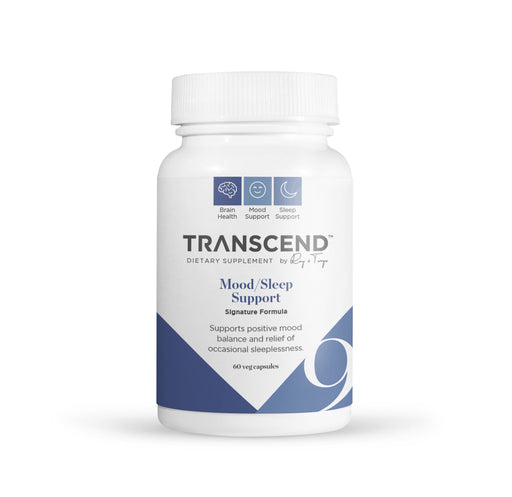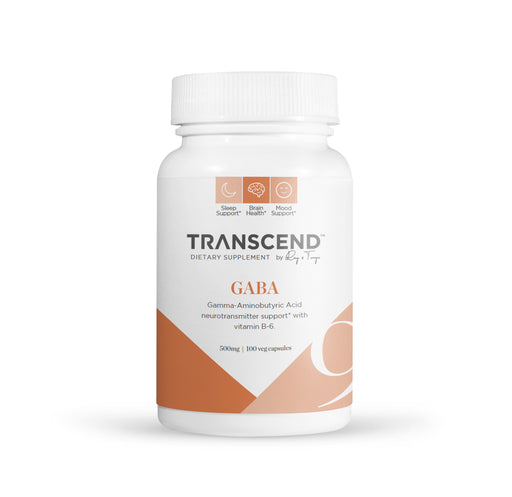
Melatonin
Found to extend the life span of laboratory animals 25 percent4,5,6 Displays powerful anti-oxidant properties7 Shown to stimulate the immune sy...
View full details
If you’ve ever experienced lucid dreaming, you’ve had that incredible feeling of being aware that you are in a dream. And if you were really lucky, you might have realized that you could control what happened. Maybe you flew like a bird, stood up to a bully, or reconnected with a past love. In a lucid dream you can explore creative and unexpected ideas without the fear of embarrassment or defeat in the real world. That is the magic of lucid dreaming. It allows you to drop all inhibitions and take grand leaps of faith to find creative solutions to everyday problems.
According to the Sleep Foundation, roughly 55% of adults have experienced at least one lucid dream during their lifetime, and 23% of people experience lucid dreams at least once per month. Some research has pointed to potential benefits of lucid dreaming, such as treatment for nightmares. However, other studies argue lucid dreams may have a negative impact on mental health because they can disturb sleep and cause dreamers to blur the lines between reality and fantasy.
In TRANSCEND: Nine Steps To Living Well Forever, Ray Kurzweil describes his lucid dreaming technique as a tool to work through problems and find solutions that might not come to him while he’s awake. Our ability to think creatively and try unconventional methods to solve problems is often hindered by social expectations, norms in the workplace, and false assumptions. But when we dream, many of the censors in our brains are relaxed, so we might dream about weird things that we wouldn’t allow ourselves to think about during the day.
________________________________________________________________
Ray’s lucid dreaming practice, in his words:
When I go to sleep, I assign myself a problem, it can be any kind of problem. It could be a business strategy problem, it could be an organizational problem, and it could be a personal problem. I specifically try not to solve it because that would drown the creative process, but I do try to think, “What do I know about this? What attributes would a solution have? What am I looking for? What are some of the constraints?” I just review what I know about the problem and then I go to sleep.
Then, two things happen. One, when I get up, I’ll invariably have some new insight into the issue. Freud said that when we’re dreaming, our senses are relaxed and we basically shut off those portions of our mind that tell us what we’re not allowed to think about. So, a lot of taboos will emerge in our dream and we’ll do and think things we don’t allow ourselves to do while we’re awake; sometimes we don’t even remember them because the taboos are so strong against even thinking about some of these things. Some of these taboos impose constraints on why you can’t solve a problem a certain way. A lot of professionals in every field — engineers, doctors, lawyers — learn to shut down certain creative approaches to problems due to the constraints of professional thinking in their field.
By thinking about problems without those senses you can find wildly creative solutions to them. But, in order to find solutions that are both creative and feasible, I make the most of the period of time when I’m awakening. I realize I’m conscious and while I could will myself to get up, I choose not to and I’m really still in a dreamlike state. It’s a period of lucid dreaming. My dream continues, but I now also have my conscious faculties.
One of the advantages of this dreamlike state is that I’m conscious enough to have my logical faculties but I’m also still in the dreamlike state where I have relaxed the restrictions to creative thinking. It’s the best of both worlds.
I really try to stay in that state as long as I can. I find it to be a fantastically creative time. I’ve come up with inventions in that state and solved difficult problems, whether they were formulas or business strategies, I’ve written speeches in a few minutes in that state. I can really get a tremendous amount done and have great clarity of thought. So then after I do get up, all I’m doing is just carrying out the decisions I’ve made in this dream state. I would say most of my creative thinking is done in that state.
The key to the process is to let your mind go, to be nonjudgmental, and not to worry about how well the method is working. It is the opposite of mental discipline. Think about the problem, but then let ideas wash over you as you fall asleep. Then in the morning, let your mind go again as you review the strange ideas that your dreams generated. I have found this to be an invaluable method for harnessing the natural creativity of my dreams.
________________________________________________________________
Ray’s lucid dreaming technique challenges the common adage -- the early bird gets the worm. Many of us wake up with daily checklists running through our minds before we even get out of bed. We grew up on early morning alarm clocks before school, babies waking us before sunrise as young parents, and stressful commutes into work for morning meetings. We never seem to catch a break. But what if we took a breath and allowed ourselves to linger in the place between asleep and awake? What if we gave our minds the chance to wander through some of life’s daily challenges while dreaming up creative solutions? Perhaps, we should stay in bed and get work done in our dreams. Or, better yet, perhaps we can get our dreams to do the work for us.

Found to extend the life span of laboratory animals 25 percent4,5,6 Displays powerful anti-oxidant properties7 Shown to stimulate the immune sy...
View full details
A Kurzweil + Grossman Formula Stimulate serotonin production Improve outlook and mood Support healthy sleep patterns Natural formula for a balanc...
View full details
Increased energy Improve mood Fight fatigue Common deficiency Better absorption Vitamin B12 (also called cobalamin) is one of eight water-solu...
View full details
Improve mood Alleviate anxiety Maintain healthy sleeping patterns GABA ( γ-Aminobutyric acid) is the primary inhibitory neurotransmitter in the ...
View full details
Leave a comment